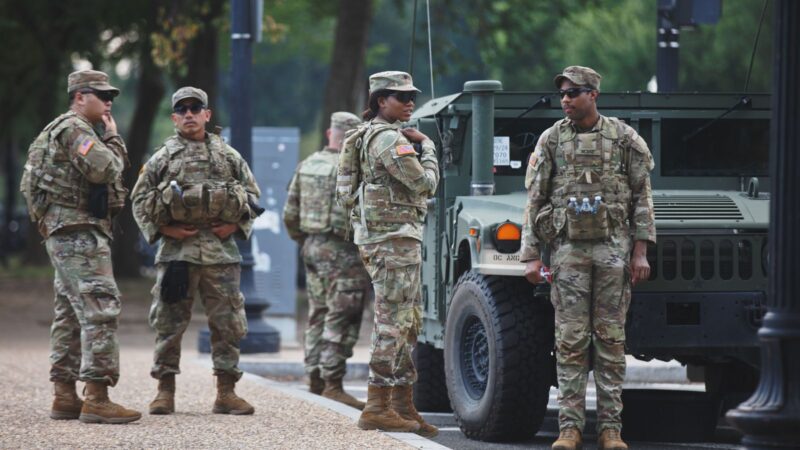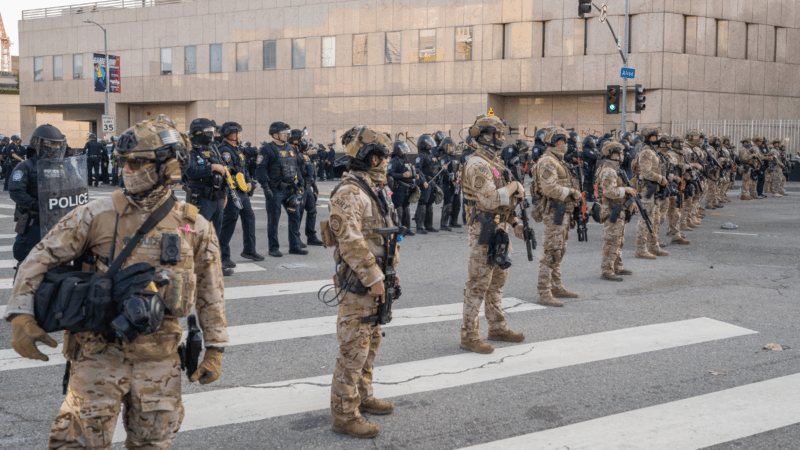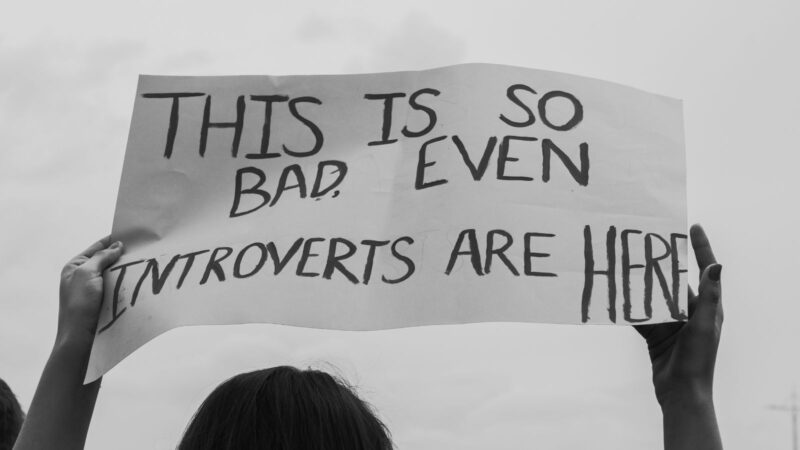Fusion voting and a revitalized role for minor parties in presidential elections
- December 14, 2023

Introduction
The run-up to the 2024 presidential election is highlighting the deep dissatisfaction throughout the electorate with our two-party system, as well as the difficulty in sustaining a broad electoral coalition to defeat anti-democratic extremism. Voters are expressing an overwhelming dislike of both major parties and growing interest in more electoral choices. Yet under our existing electoral rules, the odds of an independent or minor party candidate winning the presidency are extremely low. A common concern raised is that candidacies by the progressives Cornel West and Jill Stein and centrist political organization No Labels would splinter the pro-democracy vote in 2024, giving an electoral advantage to an authoritarian candidate like Donald Trump. Another worry is the risk of a constitutional crisis if an upstart campaign pulls off an upset in one or two states and prevents any candidate from securing a majority in the Electoral College, thereby leaving the selection of the president and vice president to Congress.
Our success in defending U.S. democracy will turn, in part, on our ability to make our political system more responsive to and representative of our diverse electorate and to facilitate cross-ideological majority electoral coalitions in defense of democracy and the rule of law. An electoral practice that once allowed minor parties throughout the country to exert real influence in politics — fusion voting — could help advance these goals. By empowering factions with differing views on policy but a shared commitment to liberal democracy to unify in support of a single candidate, fusion can serve as a key tool for defeating authoritarian threats at the ballot box. The following sections define fusion voting, describe its practical effects, and briefly summarize its long history in U.S. elections. We conclude by discussing the particular value of fusion voting in modern presidential elections, especially for voters in the political center concerned about extremism and hyper-partisanship.
What is Fusion Voting?What is Fusion Voting?
Fusion voting refers to a process that was once universal throughout the U.S. and still features prominently in several states: a candidate appears on the ballot as the nominee of more than one political party, and voters supporting that candidate use the ballot line for whichever nominating party best aligns with their views and priorities. A candidate’s vote total is the sum of the votes they received on each of their nominating party’s lines.
In practice, a minor party and major party typically “fuse” together to cross-nominate and support the same candidate. There are at least five related ways that fusion allows minor parties, voters, and candidates to more meaningfully participate in the political process:
- A fusing minor party can leverage its ballot line and support of its members to influence the positions and priorities of a competitive candidate seeking its nomination.
- A cross-nominated candidate can convey more information to voters where it matters most — on the ballot — by signaling more than just their major party affiliation.
- Voters dissatisfied with the two major parties are not forced to support one of them in order to vote for a competitive candidate. Rather, they can cast a meaningful vote on a minor party’s line that signals support for specific issues neglected by the major parties.
- Election results show how much support each candidate earns from their respective cross-nominations, uncovering the true ideological diversity of the electorate otherwise masked by a binary ballot and signaling to elected officials how much each party’s supporters contributed to their vote totals.
- In the aggregate, minor parties have greater opportunity to play a meaningful and constructive role in electoral politics. Otherwise, they have no option other than to encourage their voters to support another party’s nominee or field a non-competitive candidate.

Today, a fusing minor party serving as a fulcrum between the two major parties could have a substantial impact. By nominating whichever competitive candidate demonstrates a stronger commitment to political moderation and core democratic values like the rule of law, a minor party can give a voice — and a ballot line — to the growing share of voters who report feeling “homeless” between the two major parties. Voters can then express their discontent with the status quo at the ballot box — in a constructive manner that does not risk inadvertently helping elect an extremist candidate. If this nomination persuades even a fraction of swing voters (as would be expected), that minor party could be a major force in close elections. Competition to earn their nomination could in turn discourage extremism and temper hyper-partisanship — and in the long run, a more prominent and constructive role for minor parties might help soften the dangerously binary nature of contemporary political conflict and move us towards a more proportional and representative politics.
A Brief History of Fusion VotingA Brief History of Fusion Voting
Until the turn of the 20th century, parties nominated their preferred candidates without restriction, and candidates routinely earned multiple nominations. Fusion voting was commonplace, as minor parties used cross-nominations to elevate neglected issues into the political mainstream and build cross-ideological alliances to advance their goals.
In the 1840s and 1850s, abolitionist minor parties ascended from obscurity to become political heavyweights as they strategically used cross-nominations to help elect anti-slavery Whigs and Democrats, eventually joining forces to form the first major party forcefully opposed to slavery: the Republican Party. Decades later, minor parties representing working class interests reshaped the political landscape by cross-nominating candidates on both sides of the aisle who were willing to advance their priorities, which had been largely ignored by both major parties. Their efforts not only laid the foundation for Progressive-Era economic and social reforms, but also demonstrated the transformative potential of cross-cutting political collaboration. In North Carolina, the mostly white Populists joined forces with the mostly black Republicans to win control of the state government, the only time in the post-Reconstruction South that Jim Crow Democrats lost power.
Yet, state by state, major party leaders enacted new regulatory hurdles in the following decades meant to reduce minor party influence and entrench major party control. Chief among them were state laws banning fusion voting. By the early 1920s, only a handful of states still allowed more than one party to cross-nominate the same candidate. Over the past century, minor parties in most states have been effectively barred from nominating competitive candidates and have been relegated to a peripheral role in politics.
Over the past century, minor parties in most states have been effectively barred from nominating competitive candidates and have been relegated to a peripheral role in electoral politics.
Jurists have disagreed over the constitutionality of anti-fusion laws. In the 1990s, the U.S. Supreme Court held that the federal constitution did not prohibit states from banning fusion. Justices Ginsburg, Souter, and Stevens dissented, and a number of federal judges (nominated by presidents of both parties) have likewise reached the opposite conclusion: that anti-fusion laws violate the federal constitution’s freedom of political association1The Eighth Circuit concluded that anti-fusion laws imposed impermissibly “severe” burdens on constitutional rights. The Seventh Circuit upheld anti-fusion laws, though three judges urged the court to rehear the appeal because “[a] state’s interest in political stability does not give it the right to frustrate freely made political alliances.” A federal district judge recently criticized the U.S. Supreme Court’s “general antipathy to outsiders including minor political parties, and its inability to articulate intelligible standards for assessing infringements on parties’ associational rights.”. Whether most state anti-fusion laws throughout the country violate their respective state’s constitution is an open question. Some challenges were rebuffed at the turn of the 20th century, but other state courts, like New York’s, have concluded that anti-fusion laws are unconstitutional under state law.
As a result, fusion voting has remained a central part of New York politics, and local, state, and federal candidates frequently receive a minor party vote total exceeding their margin of victory. Presidential races are no exception, and for much of the 20th century, New York was a closely contested swing state, with minor party votes factoring significantly into electoral victories. A few notable examples include:
1940: Franklin D. Roosevelt received 45% of the vote on the Democratic line and 7% on the American Labor line, edging out a close victory over Republican Wendell Willkie and his 48%.
1944: Minor party votes again put FDR over the top, with 8% support from American Labor and 5% from the Liberal Party, in addition to his 39% vote on the Democratic line. Republican Thomas Dewey received 47%.
1960: In a razor-thin national election, the winner of New York’s 45 electoral votes would win the presidency. Although Richard Nixon received more Republican votes than John F. Kennedy received Democratic votes, Kennedy’s 6% support on the Liberal Party line delivered him the state and the White House.
1980: Ronald Reagan secured 43% of the vote on the Republican line, but his 4% Conservative Party vote pushed him over Jimmy Carter’s 44% Democratic support. (Independent John Anderson earned 8% on the Liberal Party line.)

Connecticut also allows parties to cross-nominate the same candidates, and in recent years, minor parties have seized the opportunity to play a more prominent role in local, state, and federal elections2Several states, such as Oregon, Vermont, and California (for presidential elections only), allow candidates to be nominated by more than one party, but the nominations are combined on the ballot in a way that prevents voters from specifying their preferred party. As a result, election results do not provide transparency into party-by-party breakdown of a candidate’s support. This process is known as “dual labeling.” It is also sometimes referred to as “aggregated” fusion (i.e., cross-nominations are aggregated together on the ballot), in contrast to “disaggregated” fusion discussed in this report (i.e., cross-nominations are separated, or disaggregated, on the ballot).. Minor party votes have made the difference in prominent races dating back to the early 1990s, including a razor-thin 2010 gubernatorial contest. Until the recent adoption of anti-fusion laws, cross-nominations were also permitted in Delaware and South Carolina, though they were used less frequently.
Fusion Voting in Modern Presidential ElectionsFusion Voting in Modern Presidential Elections
Allowing parties to nominate their preferred candidates is valuable in all U.S. elections — but fusion voting could be particularly meaningful in the presidential context today. A fusing minor party in the political center could have outsized impact.
A growing share of the public — roughly a quarter — dislikes and feels unrepresented by both major parties. Two-thirds of Americans express a desire for more parties. The recent emergence of the centrist Forward Party3 In April 2023, the Forward Party announced they will not nominate a presidential candidate in 2024. and the possible No Labels “unity ticket” demonstrate growing appetite for new, centripetal electoral options. And in a recent poll, nearly two-thirds of self-identified moderates expressed interest in “a new middle-of-the-road, centrist political party” that cross-nominates competitive candidates. For the millions of voters who feel stranded between the two major parties, a fusing, politically moderate party would empower them to convey their frustration with the binary status quo, their opposition to political extremism and hyper-partisanship, and their wish for the president to govern from the middle — without any risk of inadvertently helping elect an extreme candidate.
To be sure, many voters using a moderate party’s line likely would have supported the same candidate without the cross-nomination — but voting on the major party’s line would have masked their true political leanings and priorities. Others, however, may have otherwise abstained in protest of the binary options on the ballot, voted for a non-viable third candidate, or even voted for the other major party candidate.
Allowing parties to nominate their preferred candidates is valuable in all U.S. elections — but fusion voting could be particularly meaningful in the presidential context today.
While we cannot predict precisely how voters would behave in this context, we do know that presidential elections in the 21st century have been highly competitive, decided by thin margins in a small number of swing states. (As illustrated in the appendix, these margins are often even smaller than the percentage of votes cast for minor-party and independent candidates.) The last two presidential elections illustrated what happens when the pro-democracy coalition stays unified versus when it divides and turns on itself. In 2016, the anti-democratic candidate won after four pro-democracy candidates split over 53% of the popular vote, with nearly 5% going to minor-party and independent candidates. In 2020, the anti-democratic candidate lost even though the total vote share for pro-democracy candidates decreased, falling below 53%, but less than 1.5% went to minor-party candidates.
Read a PDF version of the report Read a PDF version of the report
If the diverse interests committed to liberal democracy can avoid internal fracturing at the ballot box and even slightly increase their collective vote share for a single candidate, they have a much better chance to build a formidable electoral coalition against anti-democratic extremism. If they fail to do both, the odds of an authoritarian once again ascending to the White House are dangerously high.

To defeat the authoritarian threat at the ballot box, the pro-democracy coalition must not fracture. That principle held true in 2020, and again in 2022, when cross-ideological blocs of voters mobilized to back candidates committed to the rule of law. Looking ahead to 2024 and beyond, growing discontent with the two-party system could put that electoral unity — and with it, the future of our democracy — in jeopardy. Yet the path forward is neither to silence dissenting voices nor demand fidelity to major party orthodoxy. Rather, we should embrace our ideological diversity by giving minor parties a more prominent role in our politics, making it easier to both amplify and facilitate cooperation between differing viewpoints. By making our politics more representative, fusion could bring together much of the left, center, and right in common purpose to defend and strengthen our democracy.
AppendixAppendix

Related Content
Join Us.
Building a stronger, more resilient democracy is possible, but we can’t do it alone. Become part of the fight today.
Donate
Sign Up for Updates Sign Up for Updates
Explore Careers Explore Careers
How to Protect Democracy How to Protect Democracy


